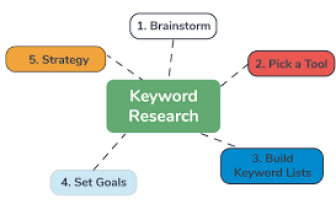How Do Data Analysts Contribute to Business Decision-Making?

Table of Contents
Introduction
The Role of Data Analysts in Business Decision-Making
Collecting and Analyzing Data
Identifying Patterns and Trends
Providing Insights and Recommendations
Tools and Techniques Used by Data Analysts
Data Collection and Cleaning
Data Visualization
Statistical Analysis
Challenges Faced by Data Analysts
Data Quality and Reliability
Complex Data Structures
Communication and Stakeholder Engagement
The Impact of Data Analysis on Business Decisions
Improved Decision-Making Accuracy
Cost Reduction and Efficiency Improvement
Identification of Growth Opportunities
Conclusion
FAQs (Frequently Asked Questions)
What skills are essential for a data analyst?
How can data analysis benefit small businesses?
What is the difference between a data analyst and a data scientist?
How can data analysis contribute to risk management?
Are data analysts in high demand in the job market?
Introduction
In today’s data-driven world, businesses rely heavily on data to make informed decisions and gain a competitive edge. Data analysts play a crucial role in this process by collecting, analyzing, and interpreting data to provide valuable insights. This article explores how data analysts contribute to business decision-making, the tools and techniques they use, the challenges they face, and the impact of data analysis on overall business operations.
The Role of Data Analysts in Business Decision-Making
Data analysts are responsible for extracting meaningful information from large datasets to guide decision-making processes. Here are the key ways in which data analysts contribute:
Collecting and Analyzing Data
Data analysts are skilled at identifying relevant data sources and collecting data from various internal and external databases. They ensure data accuracy and cleanliness by applying data cleaning techniques, such as removing duplicates and handling missing values. By organizing and structuring data, analysts can efficiently analyze it and draw meaningful conclusions.
Identifying Patterns and Trends
Data analysts use statistical techniques and data visualization tools to identify patterns, trends, and correlations within the data. They perform exploratory data analysis to uncover insights and understand the underlying relationships between different variables. This enables them to spot opportunities and potential risks, aiding business decision-making.
Providing Insights and Recommendations
Based on their analysis, data analysts provide actionable insights and recommendations to stakeholders. They present findings in a clear and concise manner, often using visualizations such as charts and graphs to facilitate understanding. These insights help decision-makers understand the implications of their choices and make more informed decisions.
Tools and Techniques Used by Data Analysts
Data analysts employ a variety of tools and techniques to perform their tasks effectively. Some common ones include:
Data Collection and Cleaning
Data analysts use SQL, Python, or other programming languages to retrieve and clean data from databases. They write queries to extract relevant information and perform data preprocessing tasks like handling missing values and data normalization.
Data Visualization
To communicate insights effectively, data analysts employ data visualization tools like Tableau, Power BI, or Python libraries like Matplotlib and Seaborn. These tools enable them to create charts, graphs, and interactive dashboards to present data in a visually appealing and informative manner.
Statistical Analysis
Data analysts utilize statistical techniques such as regression analysis, hypothesis testing, and clustering algorithms to uncover patterns and relationships within the data. These analyses provide quantifiable evidence for decision-making and support the development of data-driven strategies.
Challenges Faced by Data Analysts
While data analysis offers numerous benefits, data analysts encounter several challenges during their work:
Data Quality and Reliability
Data analysts often encounter data that is incomplete, inconsistent, or of poor quality. They must invest time and effort into cleaning and validating data to ensure accurate results. Dealing with messy data can slow down the analysis process and introduce uncertainties.
Complex Data Structures
Data analysts often work with large datasets and complex data structures, such as relational databases or unstructured data like text or images. Understanding the intricacies of these data structures and extracting relevant information can be a demanding task that requires both technical skills and domain knowledge.
Communication and Stakeholder Engagement
Data analysts need to effectively communicate their findings to stakeholders who may not have a technical background. Translating complex data analysis into meaningful insights and recommendations requires strong communication and storytelling skills. Building trust and engaging stakeholders throughout the decision-making process is crucial.
The Impact of Data Analysis on Business Decisions
Data analysis has a profound impact on business decision-making processes. Here are some notable benefits:
Improved Decision-Making Accuracy
By leveraging data analysis, businesses can make more informed and data-driven decisions. Data analysts provide objective insights based on facts and evidence, reducing the reliance on subjective opinions or gut feelings. This leads to more accurate decision-making and mitigates the risk of making poor choices.
Cost Reduction and Efficiency Improvement
Data analysis helps identify inefficiencies and areas where cost savings can be achieved. By analyzing operational data, businesses can optimize processes, eliminate bottlenecks, and reduce unnecessary expenses. This drives efficiency improvements and contributes to overall cost reduction.
Identification of Growth Opportunities
Data analysts uncover hidden opportunities by analyzing market trends, customer behavior, and competitor performance. They identify emerging patterns and market gaps that can be capitalized on. By leveraging these insights, businesses can develop strategies to expand their market share and gain a competitive advantage.
Conclusion
Data analysts play a vital role in business decision-making by collecting, analyzing, and interpreting data to provide valuable insights and recommendations. Their expertise in data collection, analysis, and visualization enables businesses to make more informed decisions, improve operational efficiency, and identify growth opportunities. Embracing data-driven decision-making has become a necessity for businesses aiming to stay competitive in today’s rapidly evolving landscape.
FAQs (Frequently Asked Questions)
1. What skills are essential for a data analyst?
To excel as a data analyst, one should possess strong analytical and problem-solving skills. Proficiency in programming languages like SQL and Python, knowledge of statistical techniques, data visualization, and effective communication skills are also crucial.
2. How can data analysis benefit small businesses?
Data analysis helps small businesses gain insights into their customers’ preferences, market trends, and operational efficiency. It enables them to make data-driven decisions, identify areas for improvement, and allocate resources effectively.
3. What is the difference between a data analyst and a data scientist?
While both roles involve working with data, data analysts focus more on interpreting and analyzing existing data to derive insights. Data scientists, on the other hand, have a broader skill set and are involved in all aspects of the data lifecycle, including data collection, cleaning, modeling, and creating predictive algorithms.
4. How can data analysis contribute to risk management?
Data analysis can identify potential risks and trends by analyzing historical data and patterns. By understanding these risks, businesses can implement appropriate risk management strategies and mitigate potential negative impacts.
5. Are data analysts in high demand in the job market?
Yes, data analysts are in high demand due to the increasing reliance on data-driven decision-making across industries. The ability to extract insights from data and drive business growth makes data analysts valuable assets in today’s job market.








